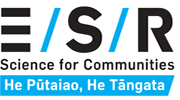Respiratory surveillance sentinel practice information
New Zealand’s respiratory surveillance programme has been in place since 1989 as a part of the WHO Global influenza surveillance network. The programme relies on a network of sentinel sites across the country run by general practitioners and nurses.
This surveillance system provides important information on respiratory viruses circulating in the community. One of the outputs from this programme is our respiratory illness dashboard.
Each week, our sentinel practices swab a small number of patients who meet the case definition to get a representative sample from across the country. Swabs are then sent to ESR’s national influenza centre for testing for Influenza, SARS-CoV-2, RSV, Adenovirus, Enterovirus, Metapneumovirus, Parainfluenza and Rhinovirus. You can view the full protocol in the resources section below – this outlines how many swabs each site should take per week, ideas for adjusting the protocol to suit your clinic and available space/resources, and a consultation workflow for taking the surveillance swabs.
You can find information and resources for clinical staff working in our sentinel sites below.
If you wish to express your interest in becoming a Sentinel GP practice for our respiratory surveillance programme, please email us at: influenza.surveillance@esr.cri.nz
Resources
The latest versions of the documents included in your FluPack are available to download below:
- Protocol
- Clinic posters
- Surveillance plan – fillable form
- How to fill a fillable form
- Information sheet for GP management
- Request for a copy of a certificate of participation for your practice
- Request for a copy of a certificate of participation for General Practitioners (for MOPS points)
Videos
To help promote and raise awareness of this vital program, we have created some short informative videos.
The first video provides an overview of the surveillance program, highlighting its importance and how it works. The second video offers more detailed information about the process from taking a swab, to testing, to provision of intelligence on our respiratory illness surveillance dashboard. The third video is a participant's perspective of taking part in the programme.
Video 1
Video 2
Video 3
